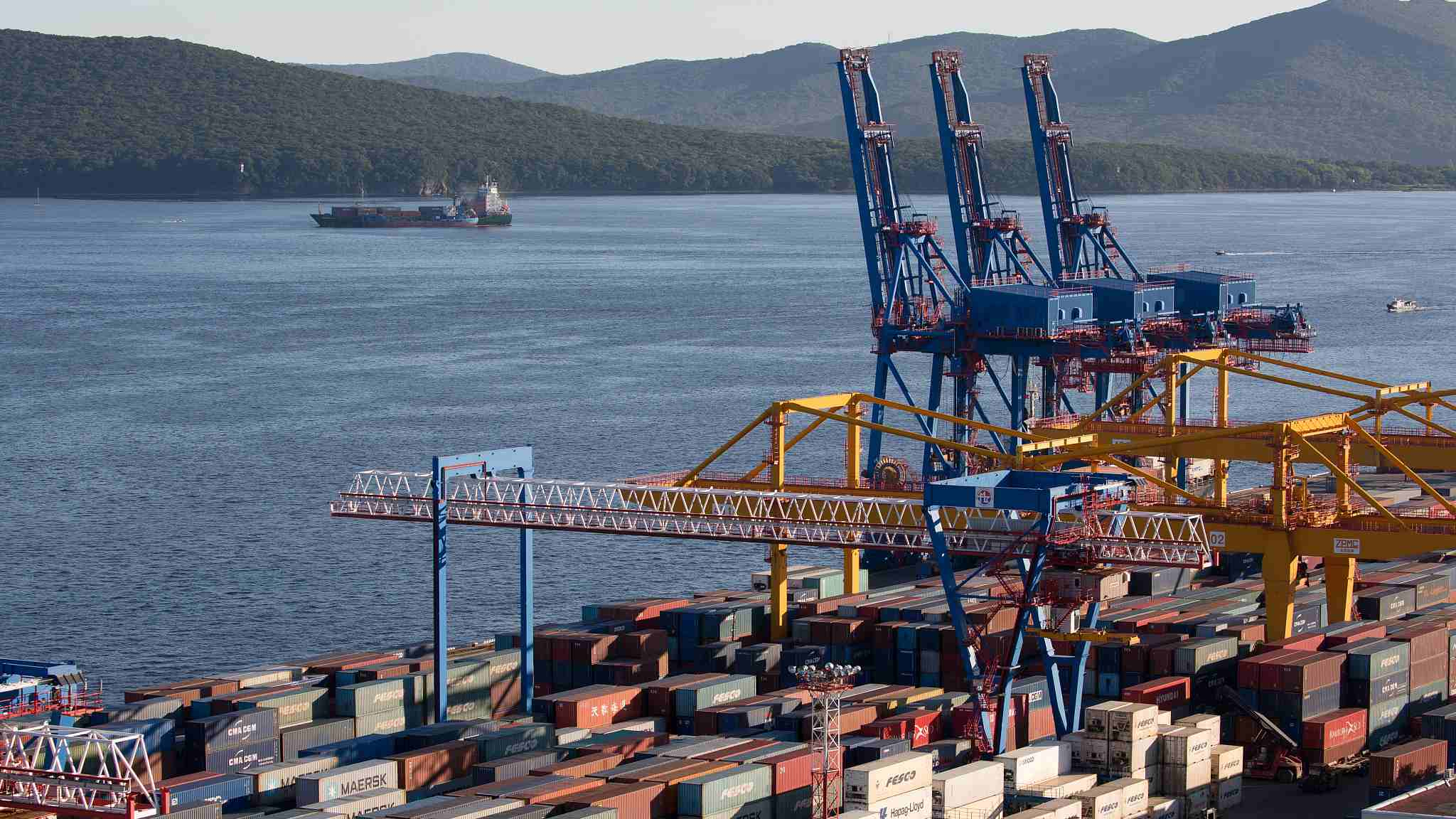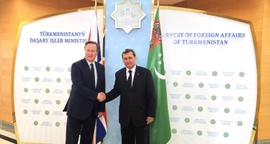Moscow and Beijing are both moving ahead with plans for economic expansion as well as bilateral economic cooperation.
“Hereby, for the first time, our countries hit the all-time high record of $100 billion, breaking a historical record,” TASS quoted Li Kuiwen, spokesperson for the General Administration of Customs and Director General of the Department of Statistics and Analysis, on Monday.
Trade between the two countries increased by 27.1 percent from 2017 to 2018, reaching more than $107 billion by the end of 2018. Last year exports from China to Russia increased by 12 percent to $48 billion, while imports of Russian goods into China jumped by 42.7 percent, to $59.1 billion. China mostly exported electromechanical products and imported oil, coal and lumber.
While hitting a 12-digit total trade figure was a target set years ago by Moscow and Beijing, a series of economic shocks came in 2014 and lasted through 2018. Last year, Trump imposed a 25 percent tariff on $34 billion worth of Chinese exports into the U.S., while Moscow faced sanctions due to the Ukrainian crisis and alleged Russian meddling in the 2016 presidential election.
Yet economic sanctions and American tariffs did not stop the Caspian giant from doing business with the Far Eastern one. Their tensions with the West arguably helped them to grow closer, and further a plan to ditch American greenbacks in pursuit of doing business in their national currencies.
China has remained Russia’s largest trading partner for eight years, while Russia reportedly ranked 10th among China’s major trading partners. To date, China’s share in Russian international trade accounts for 15 percent.
Meanwhile, Moscow has set a new target of $200 billion in two-way trade with Beijing by 2024, according to a document released by the Russian government last year.
“It is planned to increase Russia’s trade with China to $200 billion and to increase Chinese investment to the Russian economy to $15 billion,” reads the statement.
Moscow and Beijing are planning to replace U.S. dollars, which have dominated the world’s financial market for decades, with national currencies to conduct trade. After Washington imposed its first round of sanctions on Russia, which targeted the country’s financial institutions, Moscow has accelerated the process of implementing a ruble-yuan currency swap agreement inked between the Central Bank of Russia and the People’s Bank of China in 2014. By the end of 2017, the agreement was extended to boost cross-border trade using each other's currencies.
“This is an urgent task – due to the U.S. sanctions, it is essential to have new mechanisms to conduct mutual settlements between the economic entities of both countries,” Sputnik quoted the Russian government's First Deputy Chief of Staff Sergei Prikhodko as saying ahead of Russian Prime Minister Dmitry Medvedev’s visit to China in November.
Over 170 Russian banks and exchange-traded companies, as well as the Bank of China, Industrial and Commercial Bank of China, China Construction Bank and Agricultural Bank of China, are engaged in trading Chinese yuan on the Moscow Stock Exchange. In 2016, the Bank of Russia added the Chinese yuan to its basket of reserve currencies.
“We presume that the transition to settlements in national currencies will significantly reduce sanctions risks and the dependence of bilateral trade on the U.S. dollar, to avoid exchange rate fluctuations and fees for the transfer of money. Ultimately, these measures will increase the status of the national currencies,” Prikhodko said.







 Kyrgyzstan has joined the extensive reconstruction efforts in the Karabakh region of Azerbaijan, after a series of mega initiatives were launched b...
Kyrgyzstan has joined the extensive reconstruction efforts in the Karabakh region of Azerbaijan, after a series of mega initiatives were launched b...
 President Ilham Aliyev shed light on the evolving contours of the peace process with Armenia during an international conference in Baku this week. ...
President Ilham Aliyev shed light on the evolving contours of the peace process with Armenia during an international conference in Baku this week. ...
 Azerbaijan and Armenia started the process of demarcation of their border on Tuesday, with the installation of the first border markers based on ge...
Azerbaijan and Armenia started the process of demarcation of their border on Tuesday, with the installation of the first border markers based on ge...
 As the conflict between Ukraine and Russia escalates, the strategic importance of Kharkiv, Ukraine's second-largest city, has come sharply into focus.
As the conflict between Ukraine and Russia escalates, the strategic importance of Kharkiv, Ukraine's second-largest city, has come sharply into focus.
 Iran and Pakistan have signed eight cooperation documents in various fields, and agreed to strengthen ties to fight terrorism in the region.
Iran and Pakistan have signed eight cooperation documents in various fields, and agreed to strengthen ties to fight terrorism in the region.



